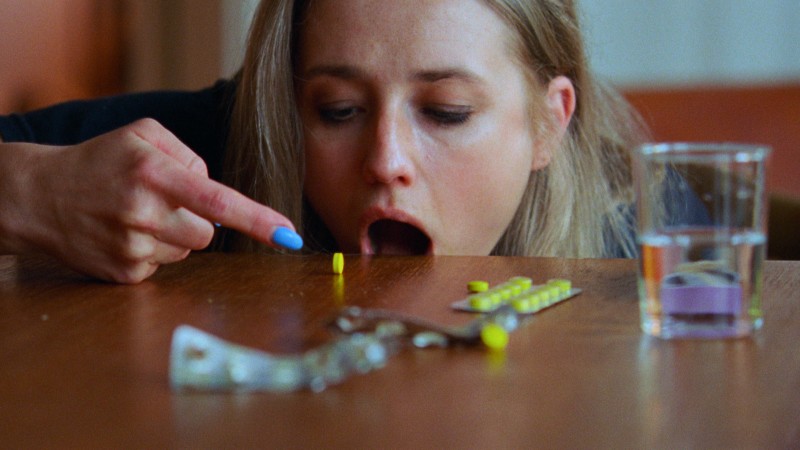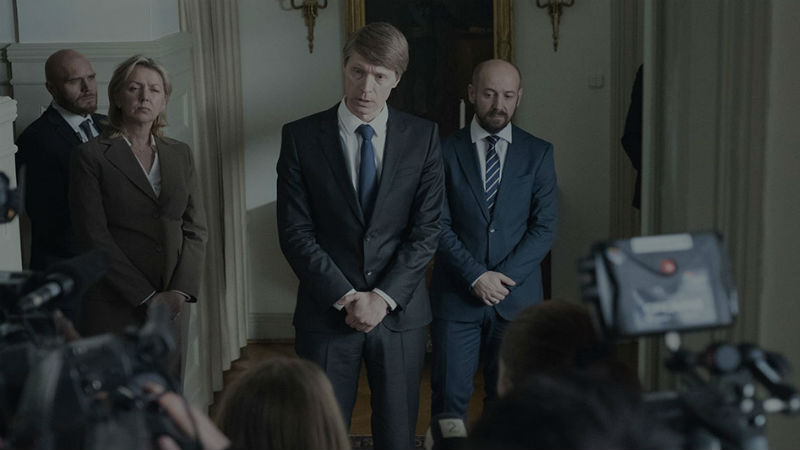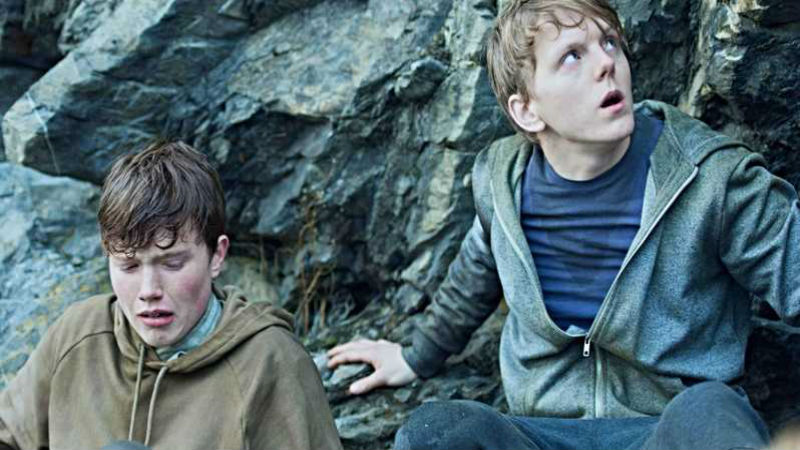Move over, The Worst Person in The World (Joachim Trier, 2021). From the same beautiful city of Oslo comes the genuine worst person in the world: Signe (Kristine Kujath Thorp), a woman so self-involved, so breathlessly shameless, so incredibly terrible, you can’t help but root for her to succeed.
That’s the thing with narcissist conmen, stretching from Tom Ripley to Jordan Belfort to the gang of Ocean’s 11 (Steven Soderbergh, 2001): they can get away with anything, because ultimately they seem so charming. While Signe, with beach-blonde hair, darting, nervous eyes, and a mischievous look, has little of the smoothness of traditional conmen, she shares that same compelling desire to rise above her station and to have the whole world know her name. She’s awful and hilarious in equal measure.
Early on at a flat party — after escaping a fancy restaurant with a $2300 bottle of wine with her artist boyfriend Thomas (Eirik Sæther) — she tells someone that “narcissists are the ones that make it.” The rest of the film somewhat tests that premise, as she shamelessly competes with her boyfriend to be the centre of everyone’s attention. Individual sequences, including a faked nut allergy, pretending someone’s dead and goading a dog into biting her are handled with an excellent sense of cringe comic timing, making me laugh while holding my fingers over my eyes.
I won’t explain the scheme that makes up the centrepiece of the movie, but it is wonderfully perverse, the kind of move that tips the film into outright psychopathy. While there’s a lot of recent films out there — like the ultimately dull I Care a Lot (J Blakeson, 2020) or that Anna Delvey miniseries that was completely unwatchable — that sees women scamming with the best of the men, this one is unafraid to make its hero a complete mess while keeping the story itself relatively believable. By rooting the story within a naturalist setting, the con just keeps getting longer and longer, until the boundaries between reality and fantasy almost seem to collapse within themselves.

Actually boasting the same producers as Worst Person, it has a similar milieu, pretty yet unassuming cast and pastel-like colours. This is by far the more satisfying watch however because it takes the same millennial self-centredness and pushes it to its absolute extremes, making fun of media trends in diversity, victim narratives, and girl-boss stories all at the same time, tied together by a lived-in, effortless performance from Thorp.
Some bends into fantastical ideation, albeit diverting once or twice, get tiresome, repeating some of the worst excesses of the previous film. While there is nothing as misguided as Worst Person’s drug sequence, certain moments could’ve easily been cut out for a more leaner, punchier experience, in line with more successfully-executed Axiom (Jöns Jönsson, 2022).
Is there a reason why scammers across both genders seem to be having a renaissance at the moment? Perhaps one could tie it to the way even everyday parts of life seem to be becoming more and more unattainable, let alone glittering mansions and worldwide fame. Sick of Myself doesn’t seem to say that you shouldn’t be a scammer, but that you should come up with a foolproof plan. Knowing the tropes and playing with them brilliantly, this fine film shows off the difficulties of trying too hard. After all, cool people never have to try that hard. Signe doesn’t know that. She’s a loser. But she’s easy to love. This worst person deserves the world.
Sick of Myself played in Un Certain Regard at the Cannes Film Festival, when this piece was originally written. It was out in the UK in October as part of the BFI London Film Festival. In cinemas on Friday, April 21st (2023). On BFI Player and also on Curzon Home Cinema on Monday, July 3rd










